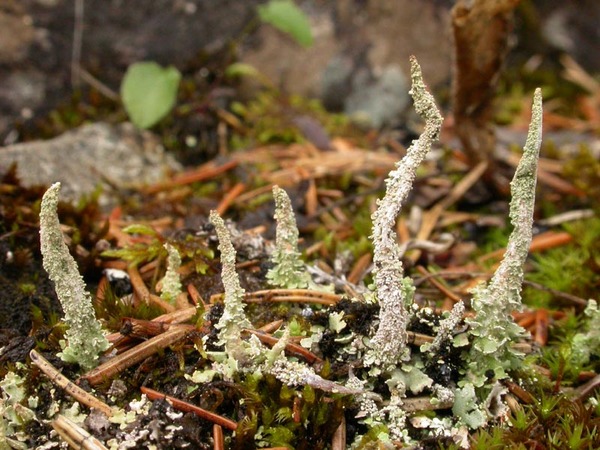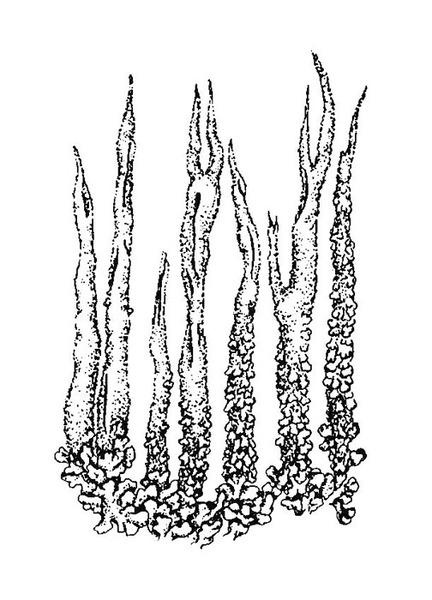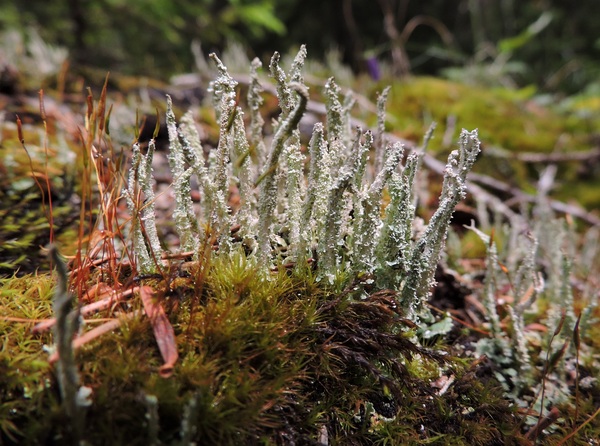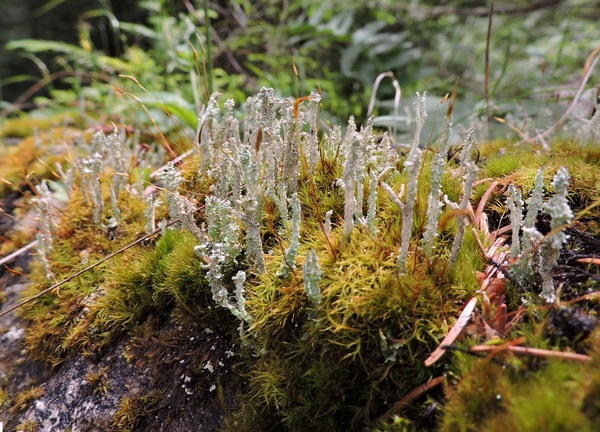Cladonia acuminata (Ach.) Norrl.
in Norrlin & Nyl., Herb. Lich. Fenn, Index.: 3, nr. 57a, 1875. Basionym: Cenomyce pityrea f. acuminata Ach. - Syn. Meth. Lich.: 254, 1814.
Synonyms: Cladonia acuminata subsp. foliata (Arnold) Vain.; Cladonia norrlinii Vain. nom. illegit.
Distribution: N - Frl (Tretiach & Molaro 2007), TAA (Nascimbene & al. 2022), Lomb (Rivellini 1994, Rivellini & Valcuvia 1996), Piem (Isocrono & Falletti 1999), VA (Matteucci & Vanacore Falco 2015). C - Tosc (Benesperi & al. 2007).
Description: Primary thallus squamulose, the squamules persisting or evanescent, 2-7 mm long, up to 3 mm wide, narrowly elongate, sinuate to crenate, involute-concave, glaucescent above, white beneath. Podetia inflated-bacilliform, simple or sparingly short-branched, hollow inside, grey to chalky white in the decorticate parts, darkening or even melanotic at the very base, cupless, 2-4(-5) cm tall and up to 2.5 mm thick, corticate and often squamulose only at base, sparsely granulose-sorediate in upper parts, the sterile apices blunt, the fertile one becoming dilated. Stereome cartilaginous, partly trabeculate; central canal grooved. Apothecia (very rare in Italian material), terminal, brown, convex, often compound and perforate. Asci 8-spored, clavate, thickened at apex, with a K/I+ blue tholus and a K/I+ strongly blue outer gelatinous sheath, Cladonia-type. Ascospores 1-celled, hyaline, ellipsoid. Pycnidia dark, semi-immersed in the basal squamules or in podetial tips, with a colourless jelly. Conidia hyaline, curved. Photobiont chlorococcoid. Spot tests: K+ yellow turning red, C-, KC-, P+ yellow slowly turning orange, UV-. Chemistry: atranorin, norstictic acid, connorstictic acid.Note: a cool-temperate to circumboreal-montane lichen found on calciferous soil rich in humus in open situations, most frequent in the mountains.
Growth form: Fruticose
Substrata: soil, terricolous mosses, and plant debris
Photobiont: green algae other than Trentepohlia
Reproductive strategy: mainly asexual, by soredia, or soredia-like structures (e.g. blastidia)
Commonnes-rarity: (info)
Alpine belt: absent
Subalpine belt: extremely rare
Oromediterranean belt: absent
Montane belt: very rare
Submediterranean belt: absent
Padanian area: absent
Humid submediterranean belt: absent
Humid mediterranean belt: absent
Dry mediterranean belt: absent
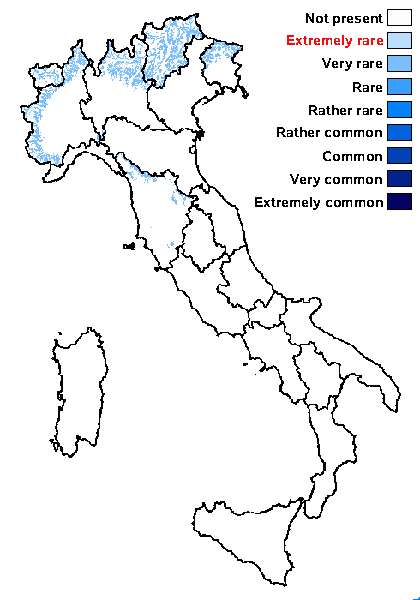
Predictive model
Herbarium samples


P.L. Nimis; Owner: Department of Life Sciences, University of Trieste
Herbarium: TSB (5093)
2001/12/24
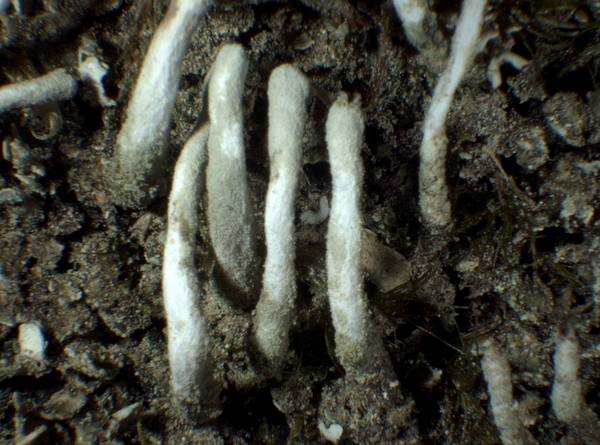

P.L.Nimis; Owner: Department of Life Sciences, University of Trieste
Herbarium: TSB (36961)
2008.02.28
Growth form: Fruticose
Substrata: soil, terricolous mosses, and plant debris
Photobiont: green algae other than Trentepohlia
Reproductive strategy: mainly asexual, by soredia, or soredia-like structures (e.g. blastidia)
Commonnes-rarity: (info)
Alpine belt: absent
Subalpine belt: extremely rare
Oromediterranean belt: absent
Montane belt: very rare
Submediterranean belt: absent
Padanian area: absent
Humid submediterranean belt: absent
Humid mediterranean belt: absent
Dry mediterranean belt: absent

Predictive model
| Herbarium samples |


P.L. Nimis; Owner: Department of Life Sciences, University of Trieste
Herbarium: TSB (5093)
2001/12/24


 Index Fungorum
Index Fungorum
 GBIF
GBIF
